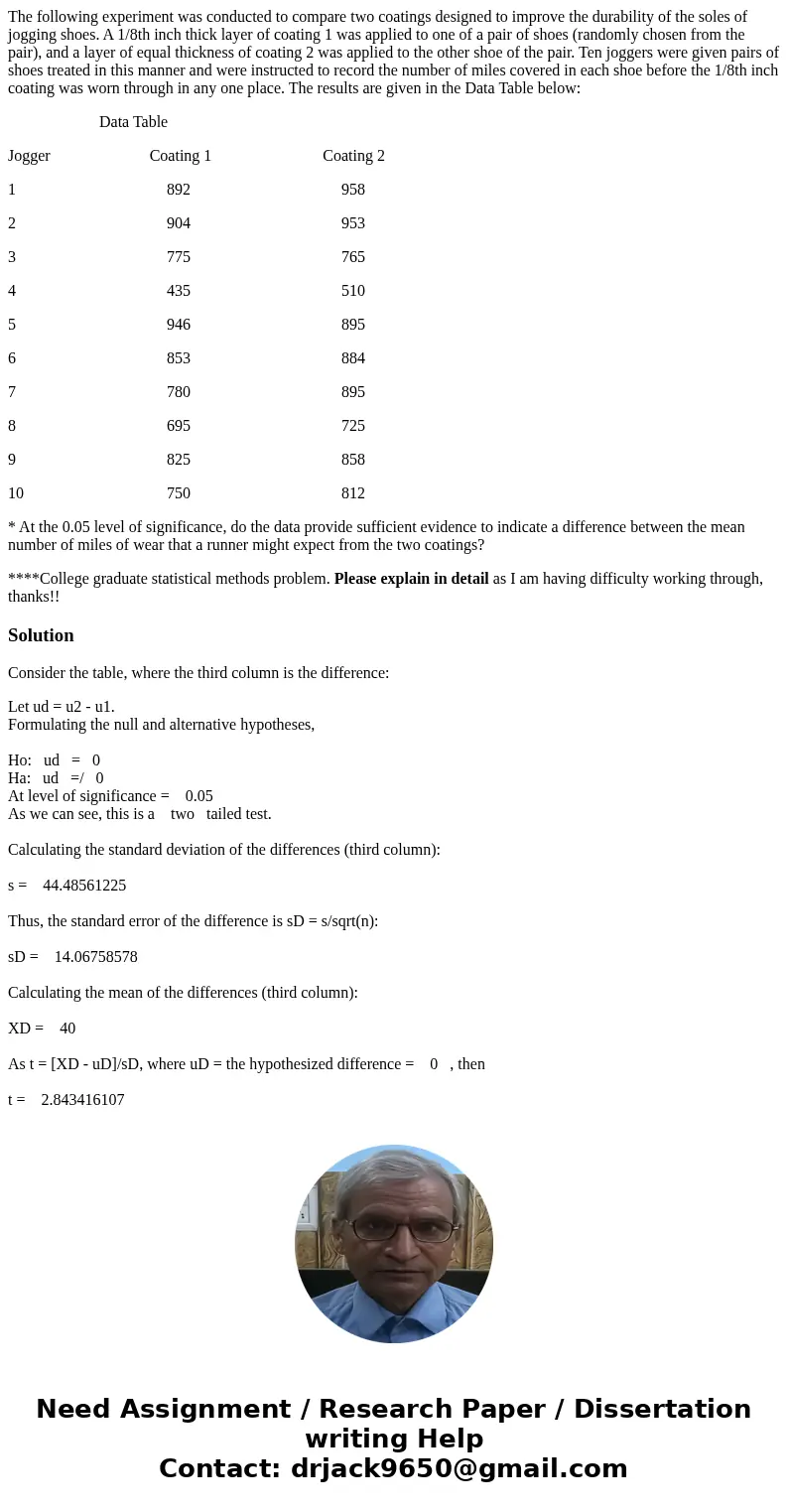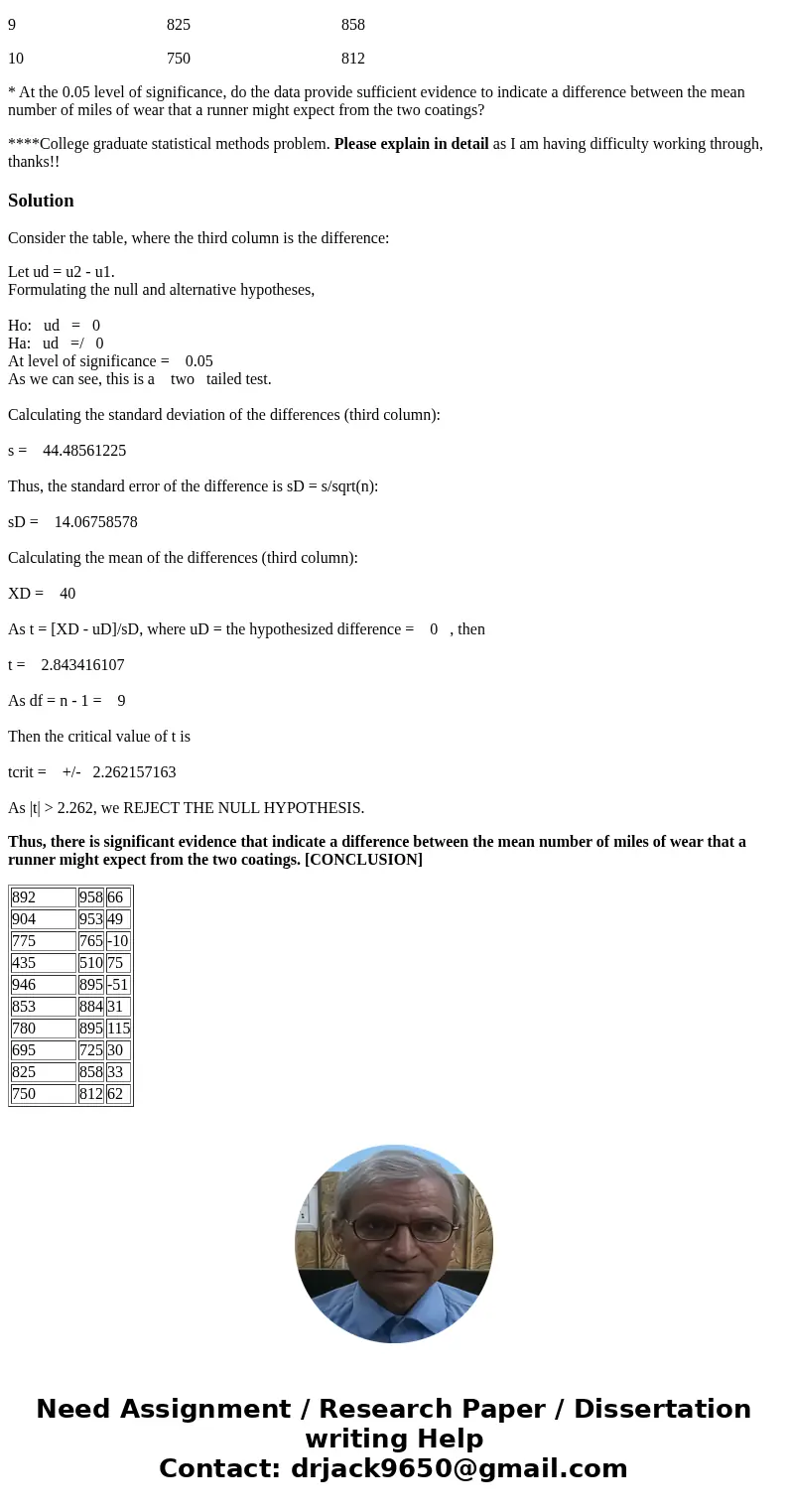The following experiment was conducted to compare two coatin
The following experiment was conducted to compare two coatings designed to improve the durability of the soles of jogging shoes. A 1/8th inch thick layer of coating 1 was applied to one of a pair of shoes (randomly chosen from the pair), and a layer of equal thickness of coating 2 was applied to the other shoe of the pair. Ten joggers were given pairs of shoes treated in this manner and were instructed to record the number of miles covered in each shoe before the 1/8th inch coating was worn through in any one place. The results are given in the Data Table below:
Data Table
Jogger Coating 1 Coating 2
1 892 958
2 904 953
3 775 765
4 435 510
5 946 895
6 853 884
7 780 895
8 695 725
9 825 858
10 750 812
* At the 0.05 level of significance, do the data provide sufficient evidence to indicate a difference between the mean number of miles of wear that a runner might expect from the two coatings?
****College graduate statistical methods problem. Please explain in detail as I am having difficulty working through, thanks!!
Solution
Consider the table, where the third column is the difference:
Let ud = u2 - u1.
Formulating the null and alternative hypotheses,
Ho: ud = 0
Ha: ud =/ 0
At level of significance = 0.05
As we can see, this is a two tailed test.
Calculating the standard deviation of the differences (third column):
s = 44.48561225
Thus, the standard error of the difference is sD = s/sqrt(n):
sD = 14.06758578
Calculating the mean of the differences (third column):
XD = 40
As t = [XD - uD]/sD, where uD = the hypothesized difference = 0 , then
t = 2.843416107
As df = n - 1 = 9
Then the critical value of t is
tcrit = +/- 2.262157163
As |t| > 2.262, we REJECT THE NULL HYPOTHESIS.
Thus, there is significant evidence that indicate a difference between the mean number of miles of wear that a runner might expect from the two coatings. [CONCLUSION]
| 892 | 958 | 66 |
| 904 | 953 | 49 |
| 775 | 765 | -10 |
| 435 | 510 | 75 |
| 946 | 895 | -51 |
| 853 | 884 | 31 |
| 780 | 895 | 115 |
| 695 | 725 | 30 |
| 825 | 858 | 33 |
| 750 | 812 | 62 |


 Homework Sourse
Homework Sourse